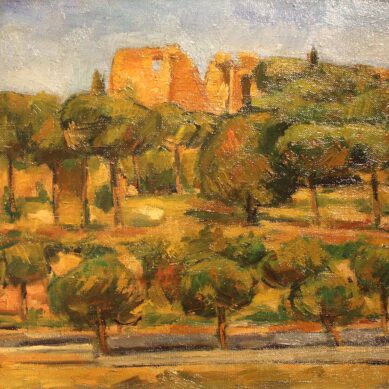You searched
Painter
Orfeo Tamburi
Are you interested in the sales or the purchase of his artworks?
We buy works of this artist
and of other painters and sculptors from the 16th century to the first half of the 20th century
The Berardi gallery offers a free and without obligation service for evaluation of ancient and modern art . To find your way in the art market, very complex and full of nuances, it is better to rely on a professional consultant who can answer fast and concretely to your needs. The clarity of the answers will resolve effectively the need to estimate or sell an asset.
Contact us immediately without commitment
Answers also in 24 hours:
Orfeo Tamburi
Orfeo Tamburi
Orfeo Tamburi was born in Jesi in 1910. After moving to Rome, he attended art school and, after graduating, enrolled at the Academy of Fine Arts. In the early Thirties, he devoted himself to his first academic nudes and to impressions devoted exclusively to views of Rome, rendered with a rapid brushstroke and a rich, dense chromatic impasto that showed a decisive anti-Novecento stance and declensions much closer to the expressionism of the Roman School.
After his debut at the Exhibition of the Fascist Fine Arts Syndicate in Rome in 1932, where he exhibited some Compositions, he was invited with a personal room at the II Quadriennale in Rome in 1935, where he presented twenty-four works, including numerous urban landscapes, Ponte Sublicio, Ponte Sant’Angelo, Ponte Mazzini and the Dome of St. Peter’s, Landscape at the Forum, The Arch of Janus and some delicate figures, Portrait of Laura, Portrait in Pink, Bather.
In the same year, feeling the need to broaden his education, he made a trip to Paris, which gave him the opportunity to study post-Impressionism in depth. He thus approached the painting of Cézanne, from whom he took up the constructive role of colour.
The Roman School
On his return to Italy in 1936, he took part in the Venice Biennale with Trinità dei Monti and Ragazza and was commissioned to paint a wall decoration in one of the rooms of the Palazzo dell’Anagrafe in Rome. The fresco, which is one of the artist’s most important works, has the Roman Carnival as its subject and is a piece that highlights Orfeo Tamburi’s contacts with some of the exponents of the Roman School, such as Alberto Ziveri, with whom he shares certain aspects linked to the narration of an intimate and popular everyday life.
Present at the III Quadriennale in Rome with some Roman Landscapes and three Still Lifes, he was a protagonist of the “realist turn” that spread towards the end of the 1930s. Establishing an effective detachment from the Tonalists, who were considered excessively expressionist, Orfeo Tamburi, together with Guttuso, Montanarini, Guzzi, Ziveri and Fazzini, manifested the need for a more bursting realism, in line with the dramatic historical condition of the time, on the eve of the Second World War.
This group of artists exhibited at the Milanese “Corrente” show in December 1939 and then came to full fruition in 1940, with an exhibition at the Galleria di Roma. In the same year, the painter was commissioned to execute the panels for the atrium of E42, but these were only sketches.
He took part in the Biennale again with a personal room where he exhibited, among other works, Figure in blue, Portrait in grey, Arco di Costantino, Reading woman. Very active in the field of costume and theatrical scenography, he continued to devote himself to landscape painting throughout the second post-war period. He moved to Paris in 1947 and held several personal exhibitions in Italy and America. He took part in the Biennale again in 1848, 1950, 1952 and 1954, with Roman and Parisian landscapes.
Elena Lago






